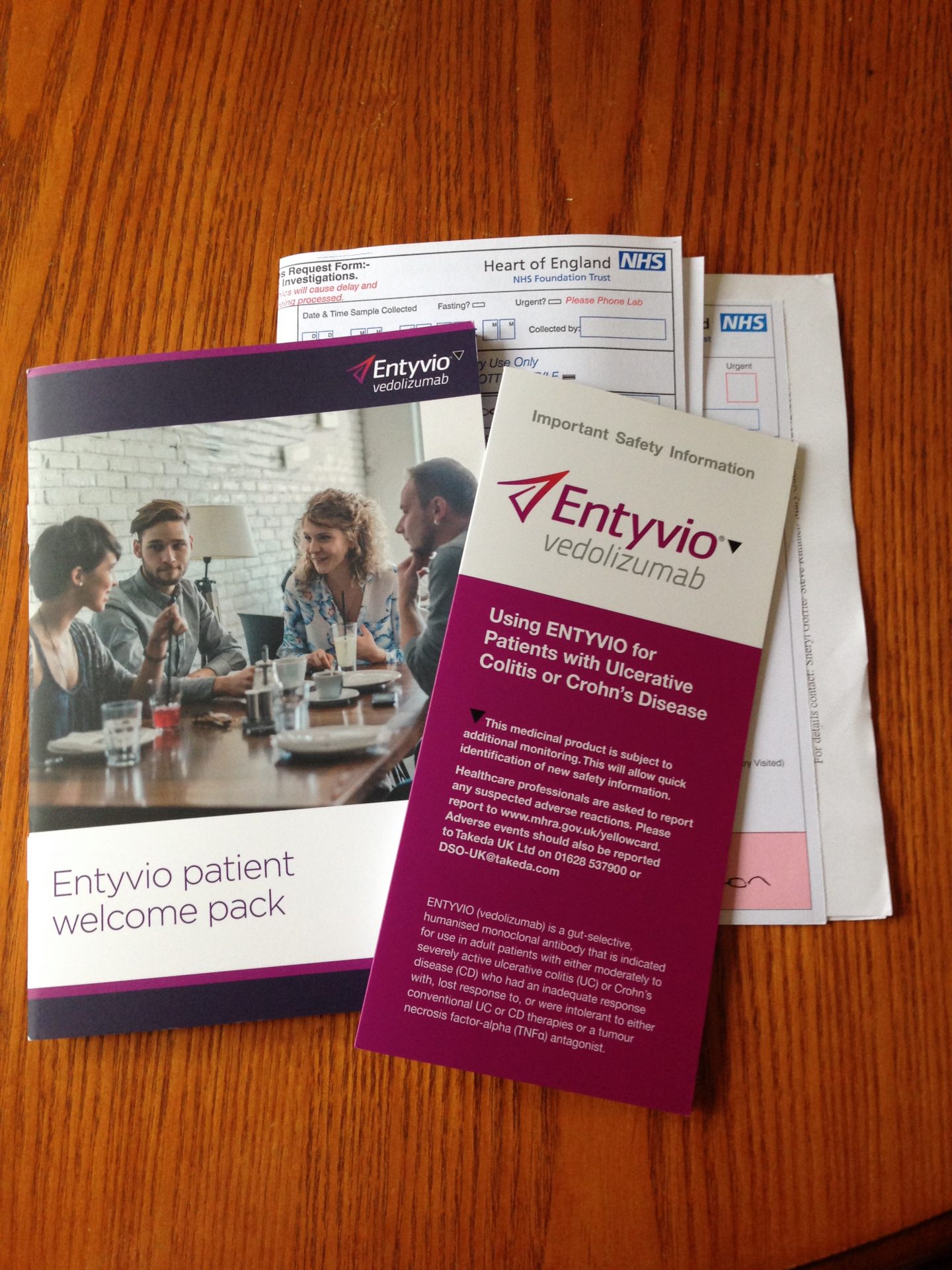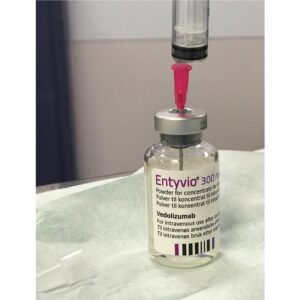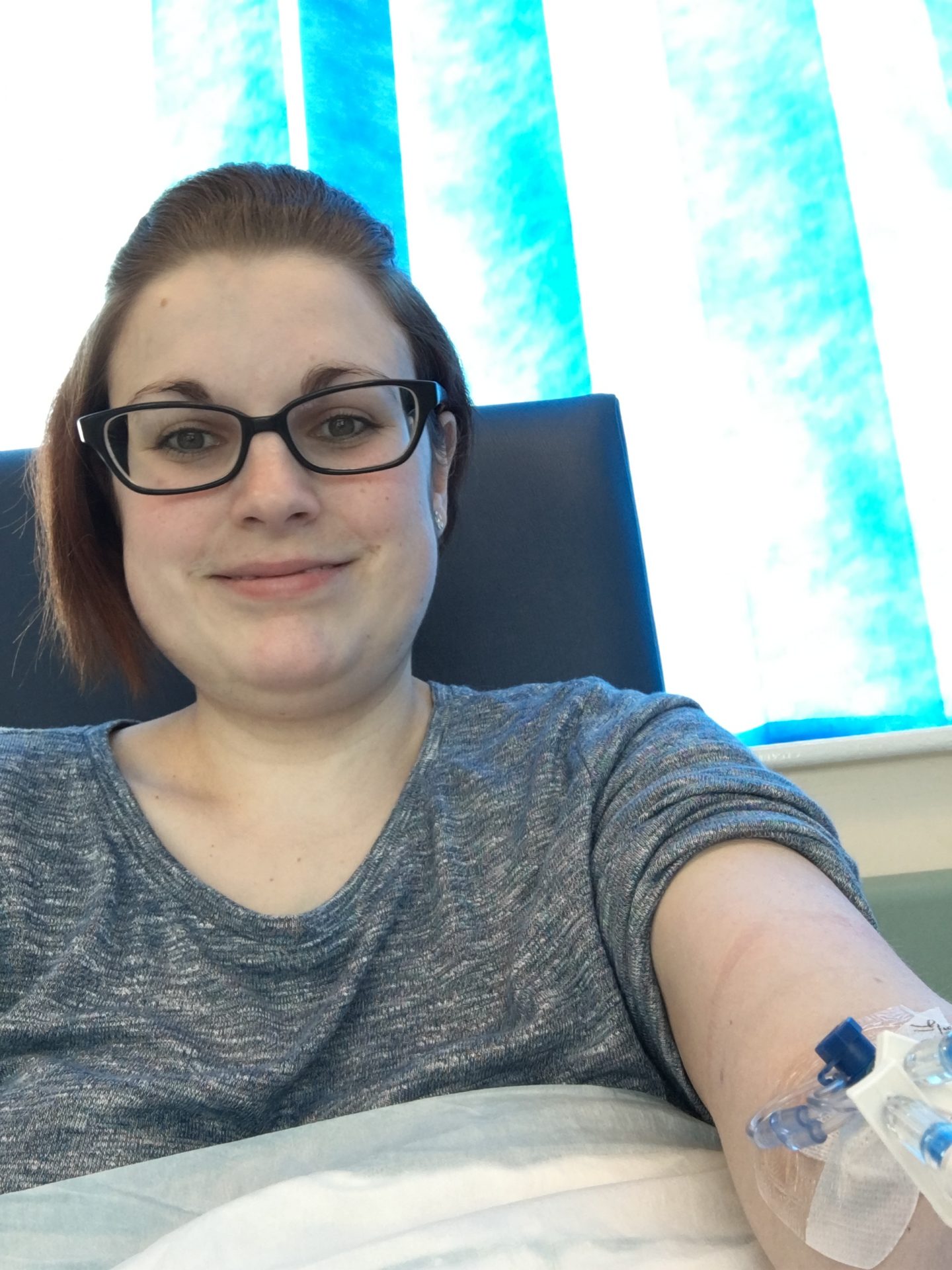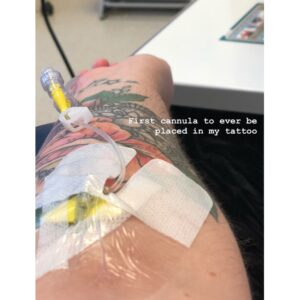
Vedolizumab is one of the newer biological treatments for IBD. Whereas Humira and Infliximab are called Anti-TNF drugs, this is a ‘gut-selective integrin blocker’ which targets white blood cells. White blood cells are made by the immune system to fight infection. In Crohn’s Disease and Ulcerative Colitis, overproduction of these cells leads to inflammation. Vedolizumab works by stopping the white blood cells from entering the lining of the gut. This means that the drug only targets the gut, rather than the whole of the body like anti-TNF drugs, and may cause fewer side effects.[1]
Vedolizumab is given to treat adults with moderate to severe Crohn’s disease or Ulcerative Colitis. In both cases, Vedolizumab may be an option for you if other treatments such as steroids, 5-ASAs and immunosuppressants have not helped your condition. It also may be an option if you have tried an anti-TNF and it did not help your condition, or you are not able to take anti-TNF drugs because of your medical history. It is currently – 2020 – still not licenced for use in children with Inflammatory Bowel Disease.

Much like Infliximab, it has the same pre-starting checks – chest X-ray for TB, patient history to find out about infections, liver issues, cancer, immunisation and pregnancy in female patients. These are required to complete the funding application for this medication, like all biological treatments in IBD. Once approved, starting Vedolizumab is exactly like Infliximab; loading doses at week 0, week 2 and week 6. The medication is a set amount each time and infusions last between 60-90 minutes plus observation time. After the fourth infusion on week 10, the effectiveness of the drug is assessed and stopping or continuing treatment is recommended.
I have received Vedolizumab three times.
Firstly, between November 2015 and January 2016 prior to my first surgery.
Secondly after my second surgery, between September 2016 and February 2017.
And again between September 2017 and September 2019.

On my first try, I did not respond as well as expected by week 10 and was given a week 14 booster with no luck. I decided at that point to pursue surgery and return to medication afterwards.

Following my ostomy surgery in August 2016, I returned to Vedolizumab for another 14 weeks and decided that due to my ‘remission’ I would go without medication. This was a massive underestimation of my disease, and I wound up in a huge flare up, needing Vedolizumab restarted during a hospital admission. While there was never any plan to officially stop the medication this time around – given how my disease responds without medications – after my proctectomy surgery removed my rectal stump, Vedolizumab wasn’t really required anymore.

My final infusion was in September 2019 and since then I’ve had my bloods and calprotectin checked on a regular basis – every two months or so – to ensure we catch a flare up in time. With discussions still ongoing, if I did flare up and need medication I would be moved to Azathioprine or Humira, depending on how my body reacts to Aza again.
My experiences with Vedolizumab can be found here.
My experiences with going medication free can be found here.
More information about Vedolizumab can be found here.
